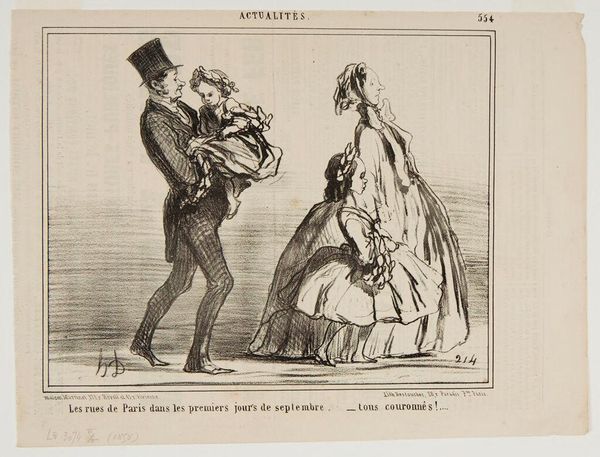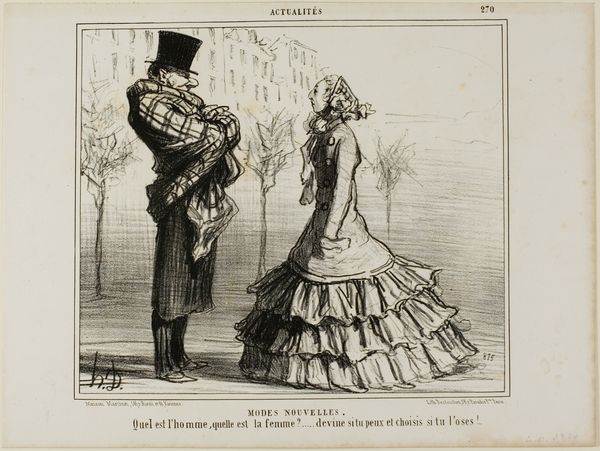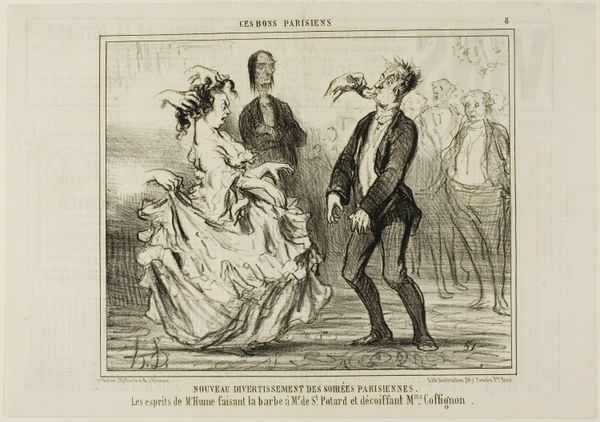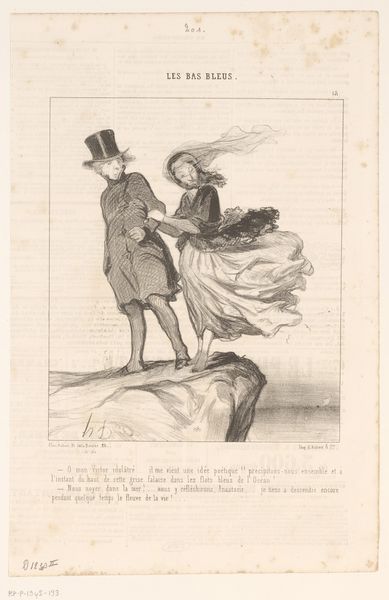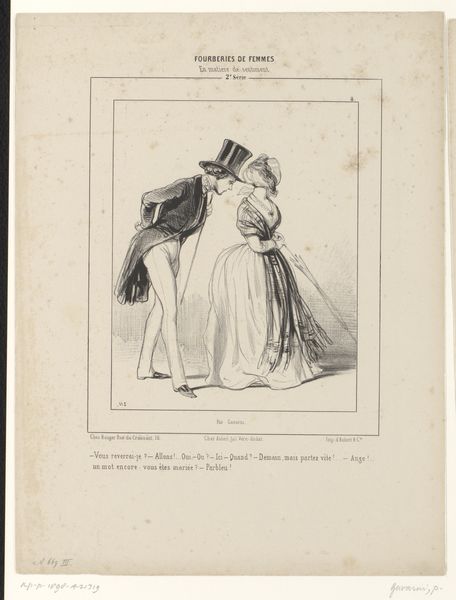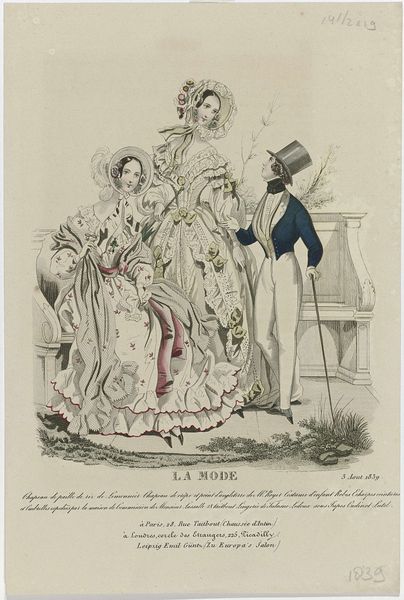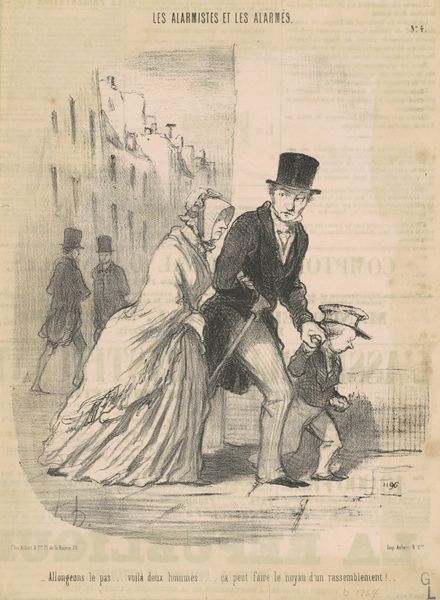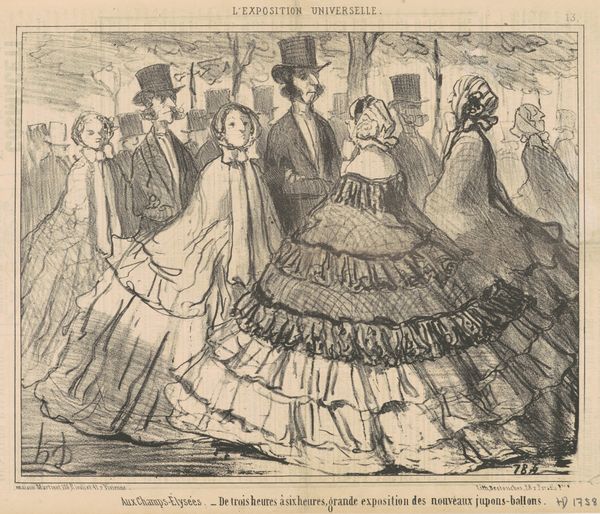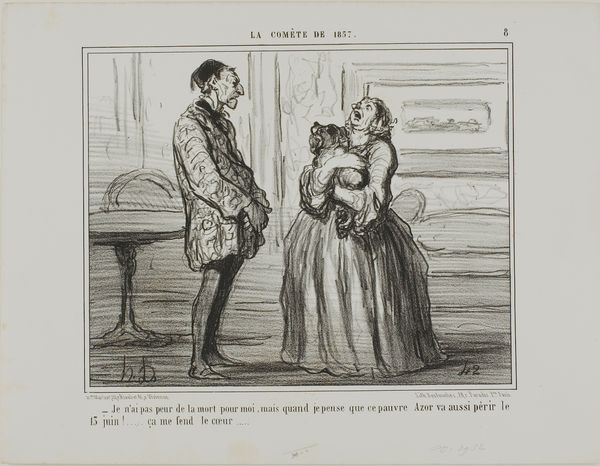
Le rues de Paris dans les premiers jours de Septembre ... c. 19th century
0:00
0:00
lithograph, print
#
portrait
#
lithograph
# print
#
caricature
#
figuration
#
romanticism
#
genre-painting
Copyright: National Gallery of Art: CC0 1.0
Editor: Here we have Honoré Daumier's lithograph, "Le rues de Paris dans les premiers jours de Septembre...", from the 19th century. The caricature style is striking. The body language almost feels performative. What are your thoughts on this piece? Curator: This work offers a lens into the social fabric of 19th-century Paris. Consider the title, which translates to "The streets of Paris in the first days of September… all crowned!". This suggests a commentary on status and performance. What do you notice about the figures’ attire and how they carry themselves? Editor: They're dressed formally, the women and children adorned with flowers, but the expressions are... strained. There's a sense of artificiality, as though they are playing a role. Curator: Precisely. Daumier frequently critiqued the bourgeoisie. His work questions the idealized image of family and social harmony. What contradictions do you find between appearance and reality? Think about who had the privilege to present such images. Editor: The idealized appearance clashes with the exaggerated features and the subtle discomfort visible in their postures. The man holding the child seems burdened, while the woman and the older child seem disconnected from each other, and from him. Curator: Indeed. Consider who is not represented. Who doesn’t get to participate in these public displays of affluence? It serves as a reminder of the societal inequities Daumier often highlighted. We’re prompted to question whose stories are amplified and whose are silenced. Editor: I see how Daumier uses this family portrait as a commentary on class and societal roles, the visible striving juxtaposed against the underlying tensions of societal structures. It challenges our expectations of family and social life. Curator: Absolutely, by deconstructing accepted social conventions, Daumier encourages critical engagement with the world around us. Hopefully you now view this image not as just a depiction of a family but as a potent challenge to consider themes of representation, power, and social justice.
Comments
No comments
Be the first to comment and join the conversation on the ultimate creative platform.
